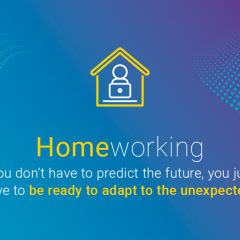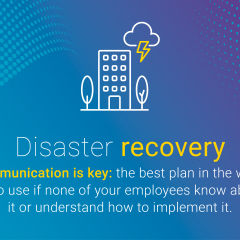Changing your telecoms or IT – Q&A with Morag Murphy
We asked Morag Murphy, Project Coordinator, about changing your telecoms or IT system. Morag manages the process of setting up new customers once they have signed a contract with us. Having overseen more than 150 installations during her time at Silver Cloud, she knows more than most about replacing a system or switching to a new provider.
Why do people decide to change their telecoms or IT systems?
There are lots of reasons. Sometimes people have to, because their phone system is an old one, which won’t work when BT switches off the old analogue network of lines. Usually it’s a purely positive decision though: to save money, to be more efficient, or because modern systems have so many more useful features.
Do people worry that the process will be difficult?
Some do, yes. There are a few concerns that we hear more often, and of course we’ve taken steps to address those. For example, sometimes a customer has lots of different suppliers for different things, all with different contract terms. Replacing some or all of those suppliers with a new one can be more cost-effective and easier to manage, but people sometimes worry that the changeover process will go wrong.
Can you handle the process of changing suppliers for a customer?
We can’t cancel the old contracts for them, but we do a lot to make it easier. The first thing is that we give the customer a complete list of which supplier contracts they should cancel and which they should keep. We also give them a templated message to send when cancelling a contract, to help ensure that they give the old provider all the information they need to cancel the contract quickly and efficiently. If the provider comes back with questions, our service team can help.
What other concerns do people have?
Some people worry that they won’t be able to get the best out of the new system. Not everyone is completely comfortable with new technology, and some employers wonder whether bringing in a new and better system will cause disruption in the short term as people get used to it.
We work with every client to give them the amount of training they need, in the way that they need it. Some customers want an hour of training for most of their users; others just want a quick overview. (We find that more detailed training is generally better in most cases.)
We also make sure that each person knows how to do the things they’ll need to do. So, for example, system administrators will get more extensive training than users who just need to know the basics.
We arrange the training at the time that suits the customer. The last day of the installation is usually best. If the new system is scheduled to go live at 9am on Monday, we can provide basic training the day before so that people have the confidence to start using it immediately.
What about downtime and disruption during the installation process?
We do hear concerns about that, yes, but in fact very few installations require a whole office to be offline for a lengthy period. When it’s essential, we will carry out an installation at the weekend, at no extra cost.
Our expert in-house team plans every installation carefully, starting with a site visit to establish exactly what will be required and spot any potential difficulties.
Continuous communication is key, and we make sure the customer is in the loop at every stage. Two days after the installation is complete, we call to make sure that the system is operating to expectations. Shortly after that, we’ll visit the customer to check that they’re still happy with everything. We also take them through their first bill, and make sure they understand the breakdown of costs.
It sounds easy!
If it’s easy for the customer that’s because we’ve done the hard work, and of course that’s exactly the way it should be.










